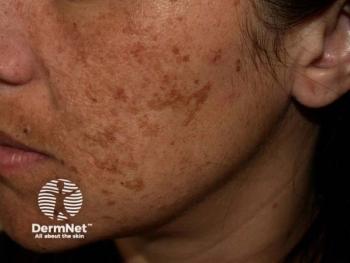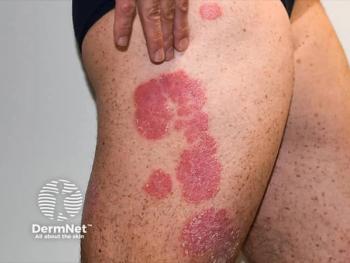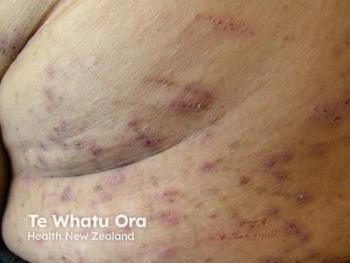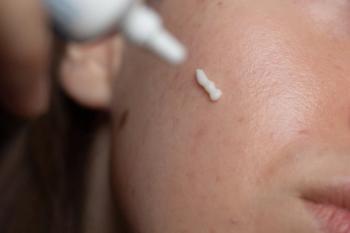
Optimal Targets Linked to Better AD Outcomes
Key Takeaways
- Goal-directed therapy in AD, focusing on minimal disease activity, enhances HRQoL and treatment satisfaction.
- Achieving optimal treatment targets significantly improves HRQoL across emotional, daily, and work domains.
Achieving optimal treatment targets and minimal disease activity significantly enhances health-related quality of life and satisfaction in patients with atopic dermatitis.
Traditional treatment paradigms for atopic dermatitis (AD) have emphasized symptom control, but emerging frameworks—such as the Aiming Higher in Eczema/Atopic Dermatitis (AHEAD) initiative—advocate for goal-directed therapy.1 A recent post hoc analysis of phase 3 clinical trials evaluated how achieving optimal treatment targets and minimal disease activity (MDA) affects health-related quality of life (HRQoL) and treatment satisfaction in patients with moderate to severe AD.2
"This study confirms that hitting optimal treatment targets in AD—EASI-90 for skin and WP-NRS 0/1 for itch—delivers real impact: better quality of life, improved sleep, and higher patient satisfaction," study author Christopher G. Bunick, MD, PhD, Yale School of Medicine, told Dermatology Times. "Optimal disease control isn’t aspirational; It is now the standard in AD care, and we have the therapies to achieve it.”
Study Design and Methodology
The analysis pooled data from 3 randomized controlled trials: Measure Up 1, Measure Up 2, and AD Up. These trials investigated the efficacy of upadacitinib (15 mg or 30 mg) versus placebo in adolescents and adults over 16 weeks. Patients were categorized based on their achievement of predefined AHEAD treatment targets: optimal, moderate, or neither. These targets encompassed both clinician-reported outcomes (ClinROs) such as EASI (Eczema Area and Severity Index), and patient-reported outcomes (PROs) such as the Worst Pruritus Numerical Rating Scale (WP-NRS) and the Dermatology Life Quality Index (DLQI).
MDA was defined as achieving both an optimal ClinRO (e.g., EASI 90) and an optimal PRO (e.g., WP-NRS 0/1). The analysis assessed HRQoL domains including itch, sleep, emotional well-being, daily function, work productivity, and treatment satisfaction.
Key Findings
Patients who reached optimal treatment targets experienced significantly greater improvements in HRQoL than those who met only moderate or no targets. These improvements spanned multiple dimensions, including emotional state, daily activities, and work impairment. For example, optimal versus moderate treatment target achievers had up to a 20.2-fold increased likelihood of reaching meaningful improvement in HRQoL outcomes; compared to patients achieving neither target, this likelihood increased to over 50-fold.
Importantly, achieving MDA yielded even more substantial benefits than achieving a single optimal ClinRO or PRO alone. In 1 definition (EASI 90 + WP-NRS 0/1), patients with MDA reported the highest rates of improvement across all measured outcomes, with 72.6% to 98.8% reaching stringent HRQoL thresholds. Notably, even patients who achieved EASI 90 but did not attain adequate itch relief (WP-NRS >1) reported markedly diminished HRQoL benefits, reinforcing that skin clearance alone is not sufficient to ensure optimal patient well-being.
Among patients who met the WP-NRS 0/1 target, those who also achieved EASI 90 exhibited the best outcomes. However, this subgroup analysis showed relatively less variation in HRQoL compared to the opposite scenario, highlighting the outsized role of itch control in perceived patient improvement.
Clinical Implications
This study provides compelling evidence for adopting a treat-to-target approach in AD, prioritizing both clinical and patient-reported metrics. It underscores that reaching MDA—rather than partial improvements in symptoms—should be a central goal of therapy. While achieving EASI 90 is a significant milestone, it does not guarantee patient satisfaction unless coupled with symptom relief, especially itch.
The findings validate the AHEAD initiative's call for integrating patient voices in treatment planning and reinforce the need for shared decision-making in clinical practice. Recognizing that symptom perception and daily function are equally vital endpoints, clinicians are encouraged to balance objective disease assessments with subjective patient experiences when setting therapeutic targets.
Limitations and Future Directions
This analysis assumes treatment-independent relationships among outcomes and is based on trial data that may not reflect real-world populations. Outcomes were assessed at a single time point (week 16), without accounting for fluctuation or durability of response. Researchers suggested future studies should examine MDA over time and explore broader combinations of ClinRO and PRO metrics.
As AD treatment evolves, incorporating MDA as a routine endpoint in clinical trials and practice could improve patient outcomes and satisfaction. These findings serve as a roadmap for elevating standards of care in AD by aligning clinical efficacy with meaningful patient-centered benefits.
References
- Silverberg JI, Gooderham M, Katoh N, et al. Combining treat-to-target principles and shared decision-making: International expert consensus-based recommendations with a novel concept for minimal disease activity criteria in atopic dermatitis. J EurAcad Dermatol Venereol. 2024;38(11):2139-2148. doi:10.1111/jdv.20229
- Silverberg JI, Gooderham M, Wollenberg A, et al. Impact of achieving optimal treatment targets and minimal disease activity on health-related quality of life and satisfaction in patients with atopic dermatitis. Dermatol Ther (Heidelb). Published online June 26, 2025. doi:10.1007/s13555-025-01469-0
Newsletter
Like what you’re reading? Subscribe to Dermatology Times for weekly updates on therapies, innovations, and real-world practice tips.


















